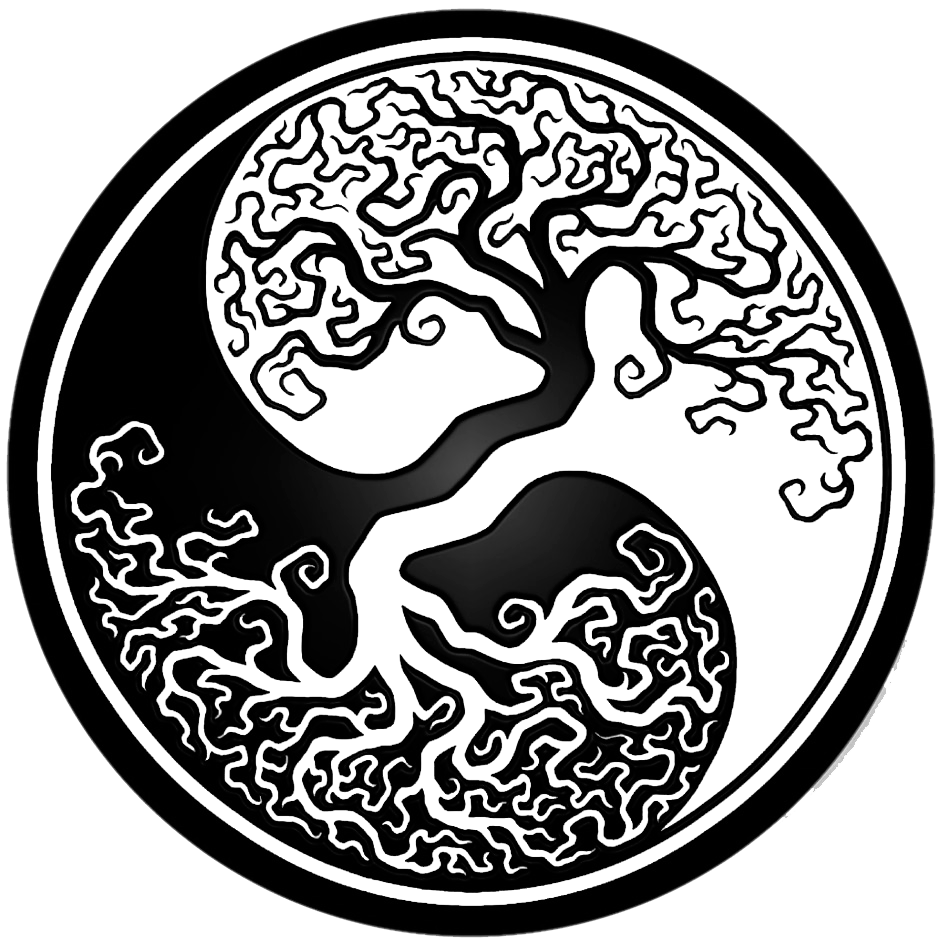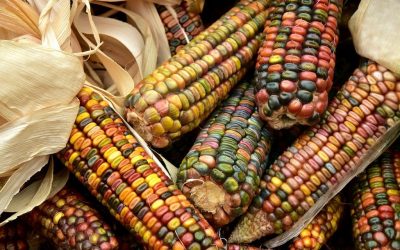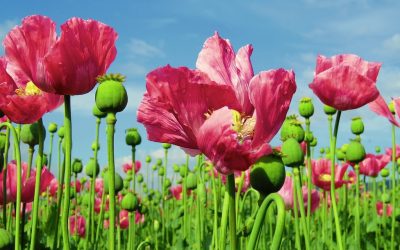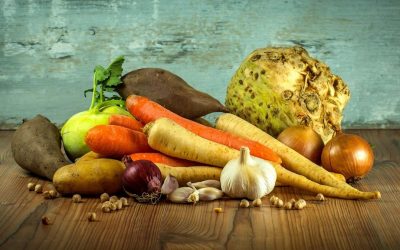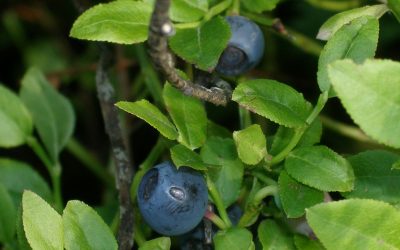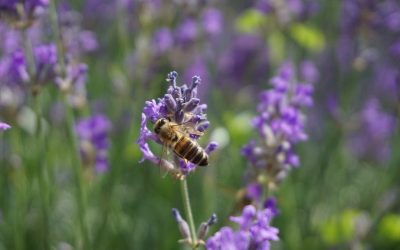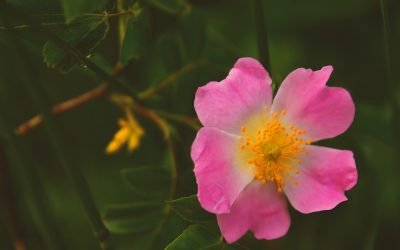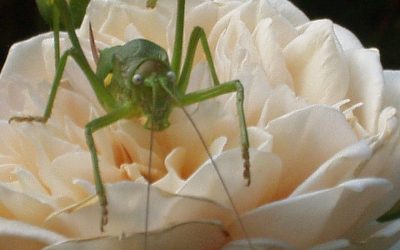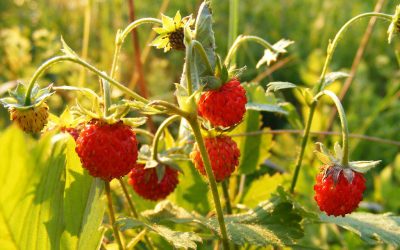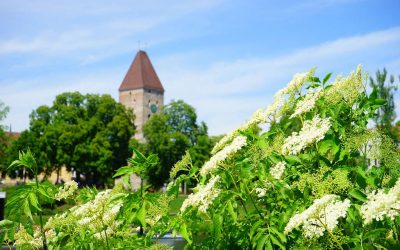Nature Notes:

Happy Beltane!
Happy Beltane!
On May 1, we celebrate Beltane, the festival of spring.
Mother Earth is donning her lushest gown of flowers and blossoms, and birds are singing from the trees. The heart rejoices, and the spirit soars!
Beltane is the season of blossoming fertility, joy, abundance and creativity. We celebrate the sheer miracle of life in all its beauty.
The God and the Goddess embody the undying force of life, and they are in love. Nature mirrors their bliss. Their dance turns the land green and lush with every step. Every fragrant flower is a kiss and a blessing, a sign of their adoration.
We are invited to join them and share in their passion. Let’s celebrate life! Beauty, love, and merry-making are our rituals, and the energy is tangible.
Gardeners witness and partake in this magic as they nurture young seedlings. But even if you don’t have a garden, you can still participate – just tend to your inner garden! Pour energy into your budding projects, and you will experience a similar phenomenon – the magic of creativity.
The secret ingredient of manifestation is the love and nurture with which we tend to our seed ideas.
Take the time to reflect on Mother Nature’s generosity, and practice gratitude and mindfulness to attune to every nuance of this blessed season.
Photo credit: Image by Ronny Overhate from Pixabay
Current issue
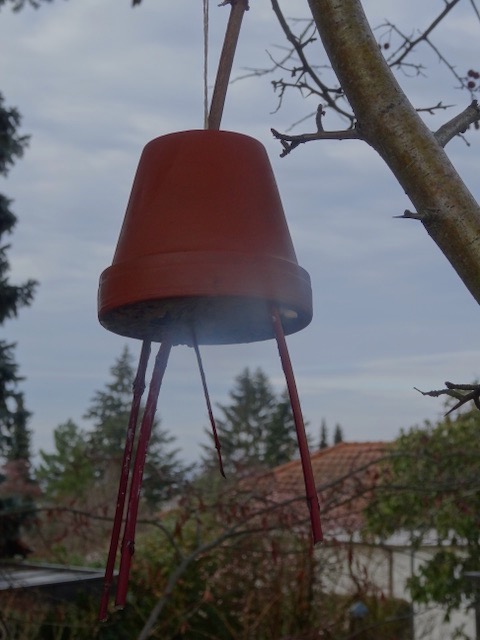
Making Birdseed Feeders
How to make Birdseed Feeders
During the winter, birds don’t always find enough food. To help them through these times of scarcity, why not offer them some ‘birdseed feeders’. They are really easy to make and much appreciated. All you need is birdseed (you can use pre-packed supplies, or mix your own, using a blend of edible seeds, nuts, and dried fruit, such as sunflower seeds, buckwheat, oats, millet, linseed, wheat, cracked peanuts or hazelnuts, raisins, etc, some hardened vegetable fat, suet or tallow.
Birdseed Cookies
To make ‘Birdseed cookies’ you can use Christmas cookie cutters.
Materials:
- 250g of hardened coconut fat
- 500g of birdseed mix
- string
Method:
- Melt the fat in a saucepan
- pour in the seed mixture until the fat is almost completely saturated
- Stir well.
- Allow the mixture to cool until it hardens to the consistency of peanut butter.
- Line a baking tray with baking paper and arrange your cookie cutters or shapes
- Now you can spread the seed mixture into the cookie cutter with a spoon or spatula
- Use a toothpick to poke a hole through which you can thread the string once the cookie has completely hardened.
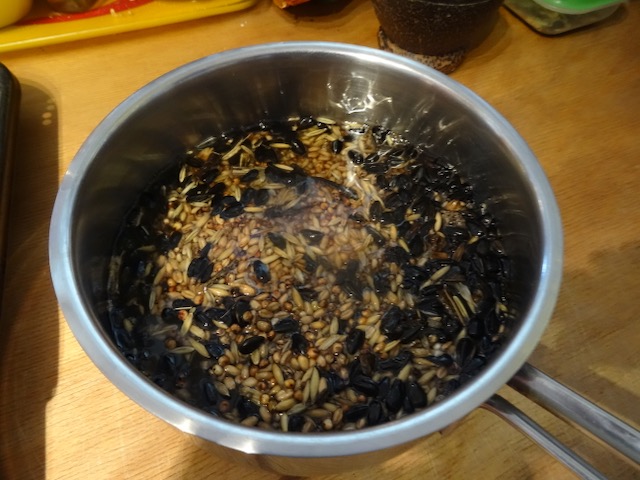
Flowerpot feeders
These are also easy to make. You’ll need small terracotta flowerpots with a hole in the bottom
Materials
- 250g birdseed mixture
- 500g suet or hardened coconut butter
- a swig of sunflower oil
- small flowerpots
- forked twigs
- string
Method
Take a forked twig and pull the straight end through the bottom of the flowerpot.
Fasten with a piece of string and pull the string ends through the hole as a hanger for the flower pot.
I used a second, short twig to fasten it securely. The forked end of the stick should stick out at the open end of the pot.
Make the seed mixture as before, but add a little swig of sunflower oil (not too much!) to keep the seed mixture a little bit softer.
Allow the mixture to cool until it has the consistency of peanut butter.
Fill the pot with the fat/seed paste and allow it to harden some more so that it won’t drip out of the pot.
Now find a tree or better still, a bush that is not accessible to cats (e.g. hawthorn tree or elderflower tree) to hang your ornaments and flowerpot feeders.
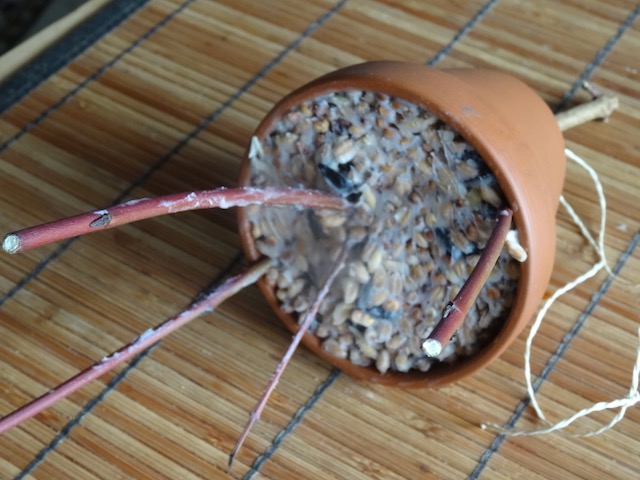
Plant Profile:
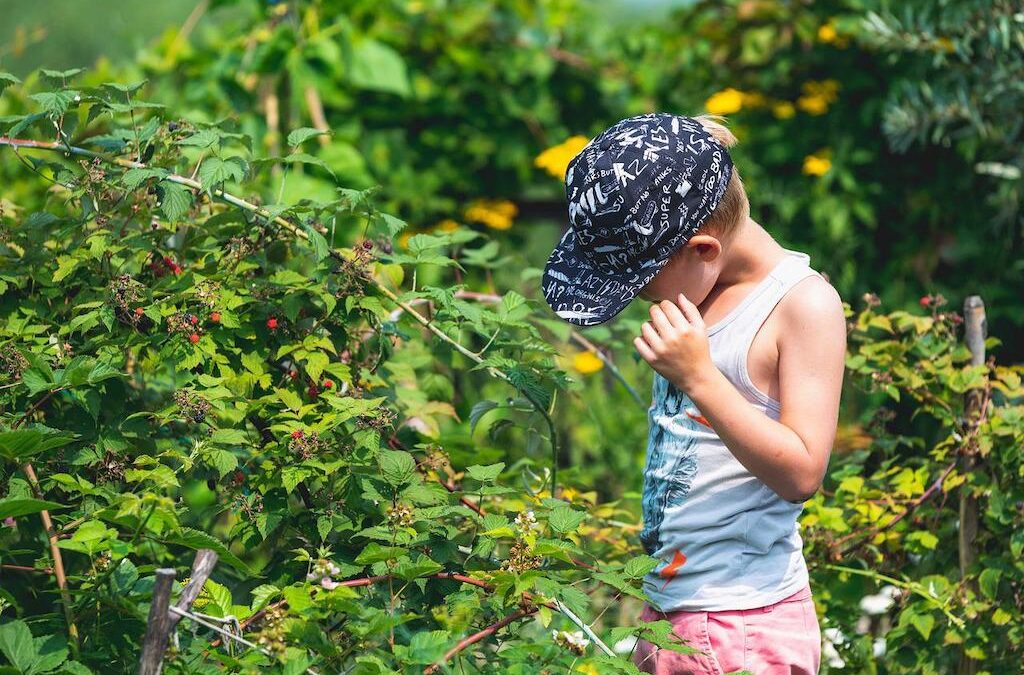
What is Foraging?
Foraging – connecting with nature through the senses
I became a forager at the age of 5, and I suspect many of you did, too. My early childhood memories are filled with berries of all kinds: wild strawberries, raspberries, blackberries, and above all, blueberries. They covered the forest floor so densely that it was difficult to set down your foot without squashing them.
The summer holidays were pure berry bliss as I munched my way through the landscape like an insatiable caterpillar.
These early sensuous experiences sowed the seeds from which, in time, my passion for nature sprouted.
Nothing can forge a deeper connection to nature and the land than such total immersion – learning by smelling, tasting, eating, feeling and playing with what nature provides in abundance. We learn by doing, observing and asking questions about what we can directly experience. These sensory impressions form the foundations of our understanding of the world.
We learn to understand processes, to see patterns from which we deduce meaning. Such intense observation creates a deep relationship with the observed. We are no longer separated, but deeply and empathically involved. A sense of familiarity and caring develops and gradually grows. A great way to stimulate this learning process is to become a forager.
What is foraging?
The term ‘foraging’ is often associated with animals roaming around looking for food. Different animals forage for different kinds of food. A hedgehog looks for beetles, snails and fallen fruit, while gorillas sustain themselves only on leaves.
As ‘civilized’ human beings, we mostly forage at the supermarket. Everything is always available, and most of us have lost any sense of connection to the cycle of the seasons and the different foods they produce – unless they are gardeners, of course. But before we began domesticating wild species of plants and animals, we incorporated a wide variety of wild species into our diets.
Picking berries or hunting for mushrooms is still hugely popular, especially in times of economic hardship. Some of us continue to forage for part of our diets – not just to save money on the grocery bill, but simply because we love it. We love the connection with the land and the variety of foods and flavours each season provides. Besides, wild foods tend to have a vastly superior nutritional profile compared to industrially farmed produce.
What are wild (plant) foods?
Wild food plants are simply edible plants that are not under cultivation. But the dividing line between wild and cultivated foods can be very vague. Many wild edibles are the undomesticated ancestors of the plants we find at the grocery. Some wild species used to be cultivated and sold on the market but are no longer grown today. Gardeners even curse them as weeds.
Some fruits and nuts are cultivated and found in the wild. The cultivated varieties are bred for specific traits and qualities, such as shelf-life. Their wild cousins tend to be smaller but are often more flavourful.
Whether we can digest any given wild plant is determined by our physiology. Certain plants that would kill us are perfectly edible for other animals.
How to become a forager?
Foraging is a skill that must be learnt like any other.
The best method to learn is to find a knowledgeable mentor or join foraging walks and classes in your neighbourhood.
But there is also much you can learn on your own.
Essential foraging skills:
Learn all you can about your environment
Observe closely, and ask questions:
What kinds of trees, bushes and wildflowers grow here?
Which animals feed on them?
Do certain plants always grow together?
What is the soil like, chalky or loamy, wet or dry?
Do you know what the farmer sprays on his nearby field?
Learn plant identification skills
Foragers must learn basic botany and become familiar with the transformative processes of plants. Learn to recognize them at different stages of their growth cycle. Some species are edible at one stage, but toxic at another.
Learn the seasons
Each season brings forth its special treats, but seasons are not fixed by a calendar. If you know how to read the signs of nature, you will recognize when the time to harvest a specific herb or fruit has come.
Learn how to care for your environment
As foragers, we are stewards of the land, not pillagers. We must not only take but also give back to nature. Remember that you are not the only hungry one out there. Others (human or animal) also depend on the gifts of nature.
Cautions:
Never ever rely on your intuition alone! Even deadly plants and fungi may look, smell or taste deceptively appealing!
Learning everything you can about your environment is the most essential skill a forager must develop.
Always test for allergies before tucking into a foraged feast. The body can be finicky when we ask it to accept foods it has never previously encountered.
And finally – knowing your land also means learning about dangers that may lurk in the undergrowth: snakes, insects (ticks!), wild boars, or even bears, depending on where you live.
Resources:
There are many knowledgeable people out there who teach foraging as a craft – too many to name them all here.
But here are a few useful books. (As an Amazon Associate, I earn from qualifying purchases.)
Keep in mind that each bioregion is unique. There are many differences concerning microclimates, seasons, and habitats. Obviously, I can’t cover them all. I focus on my local bioregion, which is Central Europe.
More articles:
Climate Change – what can we do?
"The climate emergency is THE defining issue of our times." It is the beginning of August, the time of ripening fruits. The year is progressing rapidly and the sun is already past its peak. It has been a stormy first half of the year with weather extremes throughout...
Plant Profile: Corn (Zea Maize)
Plant Profile Corn, (Zea Maize), the ‘staff of life’ of the Americas, its history, mythology and uses, medicinal properties and recipes
Plant Profile: Opium Poppy (Papaver somniferum)
Poppies come in almost every color. The flowers have an ephemeral appearance, quite otherworldly and mysterious.
Let Your Foods Be Medicines
Nutrition plays a vital part in maintaining good health. Common foods have healing properties, yet, are much safer to use than chemically more potent drugs.
Blueberries (Vaccinium myrtillus)
Summer is berry bliss. Bilberries are not just delicious but also incredibly healthy. Medicinal information and recipes.
What are Essential Oils?
What are essential oils? History and uses of essential oils, methods of extraction, various applications, and any potential concerns
Plant Profile: Medicinal Uses of Rose
Roses have long been valued for their various medicinal benefits. The petals are rich in essential oils, while the rosehips are rich in vitamins. The seeds are a valuable source of GLA
Plant Profile: Rose History (1)
Everybody knows and loves the thorny, but beautiful rose, as a universal symbol of love, although we are mostly familiar with the cultivated varieties.
Foraging Wild Strawberries
I adore wild strawberries! As far as I am concerned they are the ULTIMATE wild food.
the Elder-tree in myths, magic, and medicine
The Elder tree is the medicine cabinet of the country people. This much loved, bushy tree is a common sight throughout Britain, Europe, and North America.
The Old Tree and the Carpenter
A parable about the ‘usefulness’ of other species’, vs. the innate value of all species for their own sake, and the preciousness of life.
Burdock – Arctium Lappa
Burdock may not be the prettiest herb, but it is certainly one of the most eye-catching. Its huge leaves and burly flowers are highly conspicuous. And it has plenty to offer.
